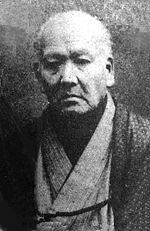Name Kawatake Mokuami Role Dramatist | ||
 | ||
Movies The Scandalous Adventures of Buraikan, The Magic Serpent Books Love of Izayoi & Seishin, Love of Izayoi and Seishin, The: a Kabuki Play by Kawatake Mokuami People also search for Masahiro Shinoda, Tetsuya Yamauchi, Shuji Terayama | ||
Kawatake Mokuami (河竹黙阿弥) (birth name Yoshimura Yoshisaburō; 吉村芳三郎) (1 March 1816 – 22 January 1893) was a Japanese dramatist of Kabuki. It has been said that "as a writer of plays of Kabuki origin, he was one of the greatest, if not the greatest, Japan has ever known." He wrote 150 or so plays over the course of his fifty-year career, covering a wide variety of themes, styles, and forms, including short dance pieces, period plays (jidaimono), contemporary genre pieces (sewamono), tragedies and comedies, as well as adaptations of foreign (Western) stories, though he is perhaps most famous for his shiranamimono, plays featuring sympathetic or tragic rogues and thieves. For the greater part of his career he wrote under the professional name Kawatake Shinshichi, only taking the name Mokuami on his retirement from the stage in 1881.
Contents
Life and career
Mokuami was born in the Nihonbashi district of Edo (modern-day Tokyo). He was disinherited by his father at age fourteen, and thus got work at a lending library, introducing him to the world of theatre. At the age of 20, he entered into an apprenticeship and in 1843 became the standing playwright for the Kawarazaki-za theatre. He began working with kabuki star Ichikawa Kodanji IV in 1854, producing kizewamono pieces. Most of Mokuami's works are in this form, and were written specifically for the star actors of the time, such as Onoe Kikugorō V and Ichikawa Kodanji IV. Many of his plays, such as the famous Benten Kozō, featured thieves and robbers, also known as shiranami (white waves), whom he represented somewhat sympathetically, as low-class heroes, or as tragic figures.
As Japan modernized and Westernized rapidly in the Meiji period, Mokuami moved along with new trends in theatre, becoming a pioneer of Shin-kabuki ("New Kabuki"), writing plays in new genres such as katsurekimono (realistic, historically accurate jidaimono period plays) and zangirimono (sewamono genre plays featuring Meiji era contemporary characters and setting).
During his 50-year career, he became the most prolific kabuki author in history, producing over 360 works: 130 sewamono, 90 jidaimono, and 140 dances. Mokuami formally retired in 1881, but continued to present new works, and was spoken highly of by novelist and literary critic Tsubouchi Shōyō. Mokuami died in 1893 and is buried at Gentsū-ji in Nakano, Tokyo.
